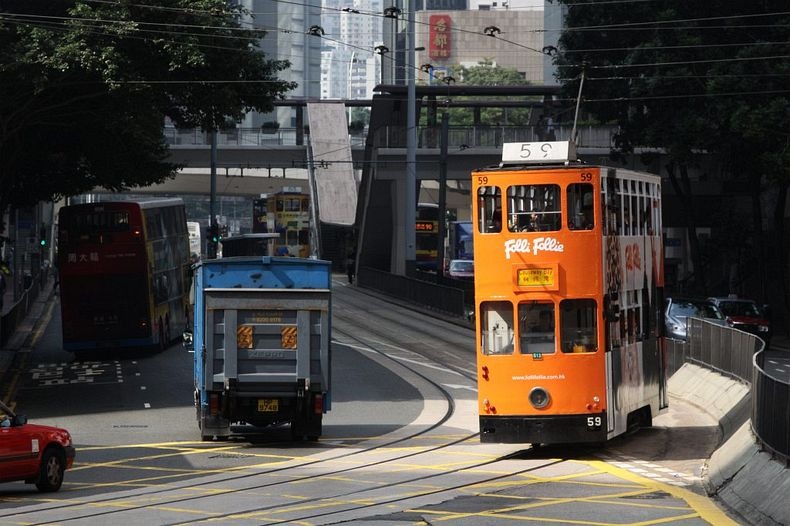Double-decker trams were once popular in the United Kingdom and some European cities, like Berlin. Throughout the British Empire countries in the early half of the 20th century including Auckland, Christchurch and Wellington in New Zealand, Hobart and Tasmania in Australia and in parts of Asia, double-decker trams were in use. They are still in service in Hong Kong, Alexandria, and Blackpool, but Hong Kong Tramways is the only tram company in the world that operates double-deck trams exclusively.
Double-deck trams were common in the United Kingdom until the 1950s. Apart from the Blackpool tramway, the Glasgow Corporation Tramways were the last to close (in 1962). Some have been preserved at the UK's National Tramway Museum, New Zealand's MOTAT Museum in Auckland and Ferrymead Museum in Christchurch. From 1910 to 1964 double-deck trams were in use in Mumbai. They were also in use in Johannesburg where trams were operational from 1906 to 1961. A few of Alexandria Tram's fleet are also double-deckers.
Trams became operational in Hong Kong in 1904, and the first double-deck tramcar was introduced in 1912. The initial tramcars were open-topped with garden seat design. These were replaced by enclosed double-decker trams in 1925 ( or 1923?). All the 163 double-decker trams in operation today are closed roof, but two of them are open-balcony types used for tourists. The trams themselves are sometimes called the "DingDing" by Hong Kong people, after the double bell ring trams use to warn pedestrians of their approach.
Aside from being an efficient environmentally friendly mass transit systems, trams are also a major tourist attraction in Hong Kong. Travelling in the lower deck of the tram allows travellers to have a close up view of the local street life, while occupying the front seats of the upper deck gives good views of the town as the tram rattles by. They are very affordable too. No matter how far you travel, each tram ride costs a flat fare of $2.30. Hong Kong’s tram system provides a good means for cheap thrill.
Hong Kong's tram system is an icon of the city, like trams in Kolkata. As they run through the urban area of Hong Kong Island, the tram tracks has become an important icon of urban Hong Kong. Since the tracks were originally built along the waterfront, the tracks can be used to identify directions and locations throughout urban Hong Kong Island.
Tram on Connaught Road West in the 1930s. Photo credit

Hong Kong’s trams are brightly colored and often covered with advertising. Photo credit
Source: Wikipedia


















This youtube video take you to the actual tram ride, tho it's a bit too shaky (but you know it is really shaky if you have been on board).
ReplyDeletehttp://www.youtube.com/watch?v=PaF8vxODTKk
Thank you for the link to tram ride video. Honestly, I think I would have a claustrophobic panic attack if I went to Hong Kong.
DeleteIn my country we have the regular trams..these look a bit scary, but they're cool :DD
ReplyDeleteHobart AND Tasmania? Hobart IS in Tasmania as Hobart is the state Capital of the island state of Tasmania. Why do most people suck in geography in the U.S.? Oh wait! A beauty contest participant enlightened us in that regard! It's because "they don't have maps"!!!
ReplyDeleteMany cities now have modern double deckers that run on ethanol to save $. Las Vegas for example. But these are a lot cuter! I do like the elevated track monorail in downtown Sydney with its Hershey Chocolate ads cars!
ReplyDelete